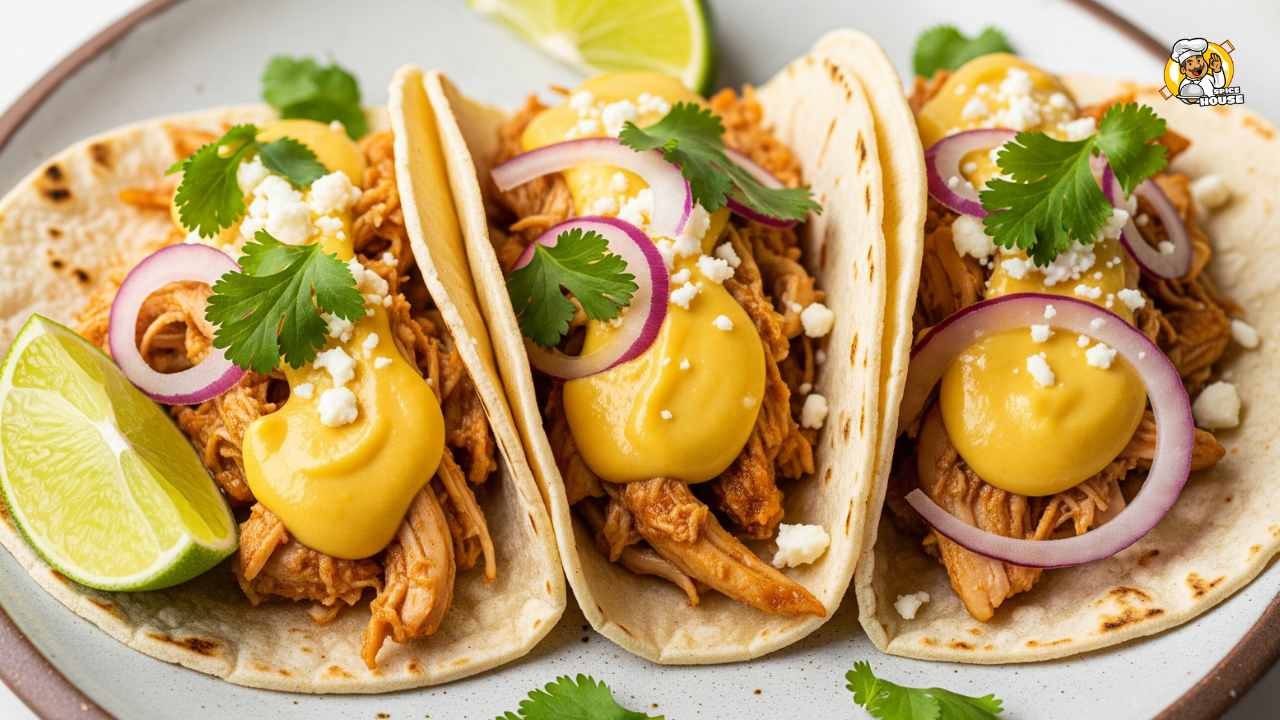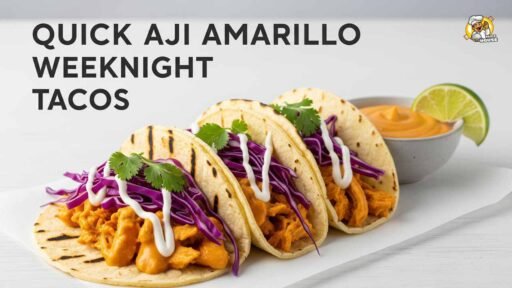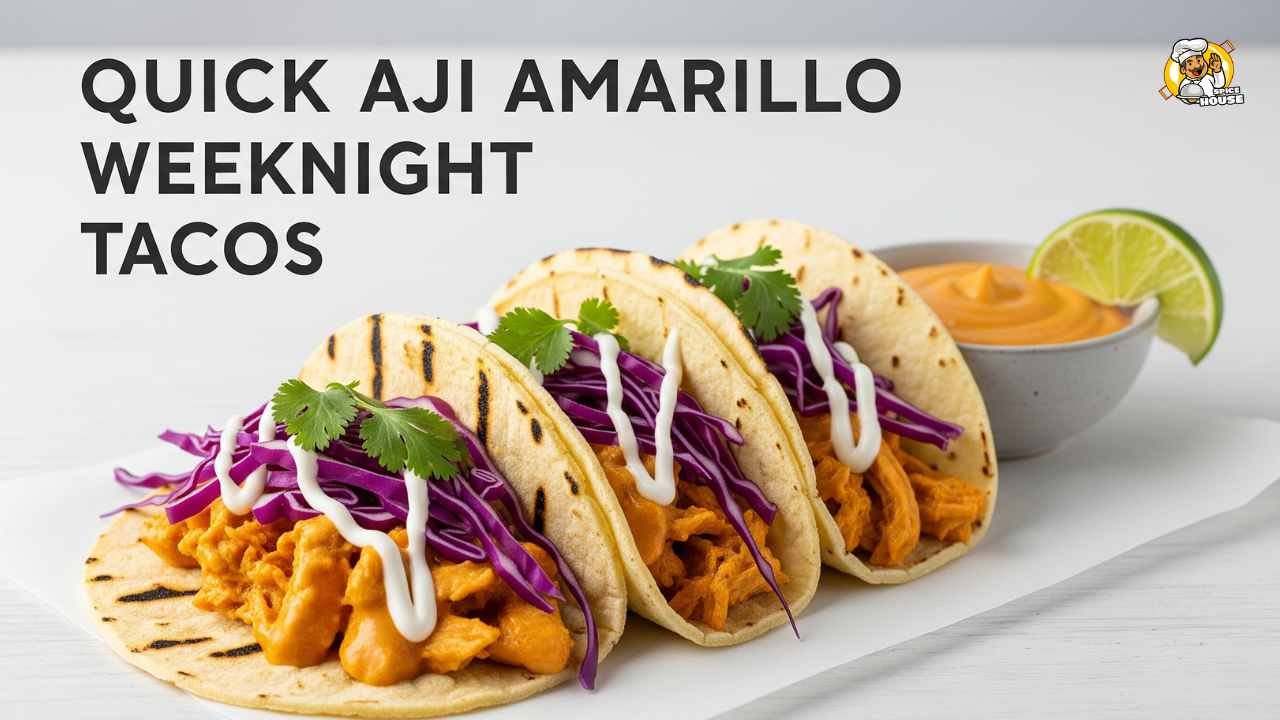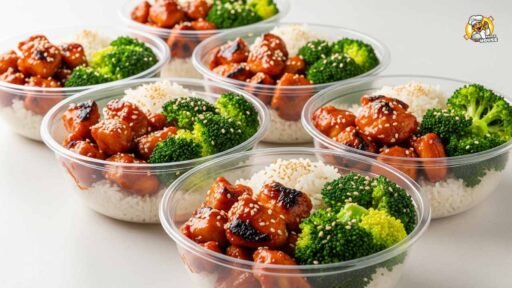Americans devour an estimated 4.5 billion tacos each year, a number that keeps the tortilla presses humming and weeknight dinners interesting for anyone chasing fresh flavor at speed. Meanwhile, ají amarillo—the golden, fruity chile that sits at – Scoville heat units—has slipped from Peruvian staple to global pantry player, offering a sunny, citrus-tinged kick that’s as adaptable as it is addictive.
Here’s the thing: big flavor has gone big business, and McCormick’s push into hotter profiles helped lift its U.S. volume share by in fiscal 2024 as it chased “global heat” with brands like Frank’s RedHot and Cholula, underscoring how spice aisle strategy can shape the Tuesday night tacos on every table. The question isn’t whether heat sells, it does, but whether the corporate sprint to scale authentic ingredients like Aji Amarillo makes dinner better, or simply louder, for consumers, grocers, and investors navigating a flavor economy that now lives and dies by a few points of market share and speed-to-shelf.
The Data
-
Ají amarillo clocks in at – Scoville heat units, roughly four to twenty times hotter than jalapeño, positioning it squarely in the medium-hot tier that most home cooks can dial up or down without fear.
-
U.S. consumers continue to lean into heat and “global flavors,” with McCormick reporting a U.S. volume share gain in fiscal 2024 and highlighting that of consumers who say they cook to eat healthier, up from three years prior.
-
Taco consumption remains massive and home-centered, with estimates placing annual U.S. taco consumption at over 4.5 billion, and a majority enjoyed at home—fuel for weeknight recipes that reward quick, bold flavor decisions.
Quick Aji Amarillo Weeknight Tacos: Step-By-Step Guide

Mild-to-Wild Heat Guide
Call it the flavor arms race in miniature: a reliable way to scale ají amarillo from mild to wild, so each eater lands on the right side of the burn without losing the pepper’s mango-passion fruit brightness. Start with paste, which offers consistency and speed; if fresh chiles are available, remember the base heat sits at – SHU, comparable to cayenne and tabasco, so a little goes a surprisingly long way in a weeknight pan.
For families or mixed groups, build a neutral base and “tint” portions with paste at the end, rather than locking the entire skillet at a single heat setting that punishes some and bores others. The mild tier can sit at 0.5 to 1 teaspoon paste per pound of protein, medium at 1 to 2 teaspoons, hot at 2 to 3, and wild at 3+. Easy to remember, easy to scale, and forgiving when tempered with crema, avocado, or queso fresco.
If this smells like a cop-out, remember that flavor perception changes across fats, acids, and temperature; cold, creamy toppings can make “hot” feel pleasantly medium, while lime and heat amplify each other in zippy ways. Bonus: capsaicin’s metabolic effects suggest a small upside for heat tolerance training; clinical work associates capsaicin and related capsinoids with higher energy expenditure and decreased appetite in controlled settings.
Pantry And Sourcing
If a local market doesn’t stock fresh ají amarillo, paste is widely available and ideal for fast tacos, delivering the pepper’s hallmark fruit and sunny color without prep overhead. Ají amarillo is a Capsicum baccatum pepper foundational to Peruvian cooking, prized for its clean, tropical profile that hints at passion fruit and raisin, and it shines in sauces and sautés where fruit-acid balance takes center stage.
The pepper matures from green to deep orange, and the paste captures that ripe stage, which explains why even a teaspoon can color an entire pan sauce in a way that looks restaurant-ready on a weeknight. Flavor pairings to keep on deck: lime, garlic, red onion, cilantro, tomato, and queso fresco, with cumin lending a warm backbone and potatoes or tortillas acting as neutral carriers for the chile’s vivid notes.
For authenticity-minded cooks, note the Peruvian “holy trinity” often cited—ají amarillo with garlic and onion—and treat tacos as a format rather than a rigid cuisine boundary; the same base pastes that fuel aji de gallina can carry a Tuesday-night skillet to the table in 20 minutes. Sourcing tip: look for consistent brands of paste and check salt content, because some jars run saltier than others; balance with lime and a splash of water or stock if a sauce gets too tight.
Proteins In 20 Minutes
Midweek solutions need to be fast, flexible, and forgiving, which is where ají amarillo paste earns its keep in a sauté. Thin-sliced chicken thighs, ground turkey, or sliced mushrooms all take well to a quick glaze built from 1–2 teaspoons paste, a spoon of tomato paste, a glug of olive oil, and a squeeze of lime, blooming in the pan before the protein hits for a fragrant base.
For shrimp or flaky fish, bloom the paste briefly, then deglaze fast with a little stock and lime, finishing off with heat to protect delicate textures while preserving that sunny orange sheen. Plant-forward options benefit from contrast: charred cauliflower or zucchini get lift from ají amarillo’s fruit and heat, while beans or lentils add structure so the taco eats like a meal.
Because ají amarillo sits in the medium-hot band, a single pan can be split into zones: push protein to one side, adjust paste concentration on the other, then toss portions separately to dial heat by plate without cooking twice. Capsaicin’s thermogenic properties may help a heavier filling feel lighter at the margins, a subtle perk when the meal needs to satisfy without dragging down the rest of the evening.
Salsas And Toppings
Mild-to-wild works best when toppings let diners steer heat mid-bite, which is where a quick ají amarillo crema or salsa cruda can stretch a single skillet into multiple experiences. Stir 0.5 to 1 teaspoon paste into 0.5 cup sour cream or Greek yogurt for a mild crema, or blend paste with tomato, onion, cilantro, and lime for a quick salsa that hums without blowing out palates.
Queso fresco and avocado temper the heat and round the pepper’s fruit, while pickled red onions and lime sharpen its high notes—two paths, two moods, one weeknight. For a bright table sauce, whisk ají amarillo paste with olive oil, lime, a splash of water, and a pinch of cumin until glossy; drizzle on top so the warm tortillas soften the edge and carry the aroma.
If a diner overshoots and lands in the “wild” zone, dairy helps; milk proteins bind capsaicin, which is why crema and cheese can rescue a too-hot taco in seconds. And yes, beyond taste, capsaicin shows promising links to satiety and fat oxidation in controlled studies, though dinner should still lead with pleasure rather than lab metrics.
The 20-Minute Flow
-
Preheat a skillet and warm tortillas in a dry pan or over a low flame, wrapping them in a towel to hold heat while the filling cooks.
-
Bloom 1–2 teaspoons ají amarillo paste in olive oil with garlic for 30–60 seconds until fragrant, then add tomato paste and a splash of water or stock to build a quick glaze.
-
Add protein or veg and toss to coat; cook through, adjusting paste by pushing part of the filling aside and tinting a small portion hotter for heat-seekers.
-
Finish with lime and cilantro, then plate with crema, avocado, and pickled red onions to let diners tune the heat by topping.
-
Serve immediately; the sheen, color, and aromatics make these tacos look elevated without any weekend-level labor.
The People
“Ají amarillo is the most important ingredient in Peruvian cuisine,” a sentiment widely attributed to chef Gastón Acurio and echoed across Peruvian food circles as the pepper has come to symbolize the country’s bright, layered approach to heat and acidity. That enthusiasm now meets a global market that prizes speed and simplicity, where paste form becomes the gateway for home cooks who want Peruvian brightness in a familiar taco format without a specialty shop run, and that’s not a bad bridge between traditions and Tuesday nights.
On the corporate side, “The demand for flavor remains strong,” McCormick CEO Brendan Foley told analysts, citing a return to volume growth as the company leaned into “global heat” and new formats; sources say that hot sauce now functions like a calling card for the broader spice aisle in crucial demographic segments. Bloomberg chronicled the company’s long-run hot sauce ambitions years ago: “They want to see their hot sauce on every tabletop in the world,” one industry voice said, framing a strategy that, love it or not, set the stage for this moment where aji-forward home cooking dovetails with a packaged flavor portfolio.
The Fallout
There’s upside: analysts expect robust expansion in herbs and spices through 2030, projecting CAGRs in the mid-single to high-single digits as natural flavors and global cuisines keep beating processed sameness—tailwinds that could keep supermarket resets busy and selection deep. If Gen Z and Millennials already spend more on hot sauce than ketchup, as McCormick notes, retailers will keep shifting shelf space to heat, which nudges weeknight shoppers toward bolder, brighter dinners built from quick pastes and blends.
Menu and social listening data also point to shifts within the taco category—snack-sized formats rising, plant-based interest expanding—which favor fast, scalable sauces like ají amarillo that deliver impact without long simmer times or heavy prep. But there are trade-offs: when a single pepper becomes a global SKU, sourcing, price stability, and consistency start to matter as much as culinary romance, and that’s where corporate scale can both safeguard supply and sand down edges that make a regional flavor feel alive.
The more weeknights turn into heat-tests, the more a mild-to-wild strategy helps keep tables inclusive; otherwise, a single “hot” dial risks alienating diners who want the fruit without the fire and the aroma without the afterburn. Also: with billions of tacos eaten at home, the fastest-moving products will define real-world flavor literacy; teachable, modular heat like this guide may be the difference between a one-off stunt and a lifelong pantry habit.
The Data (Expanded)
-
Company performance: McCormick’s fiscal 2024 net sales rose to $6.72 billion, while U.S. volume share increased 2.3%, reflecting both pricing and volume/mix tailwinds amid consumers cooking more at home and seeking global heat.
-
Category ambition: “Hot sauce supremacy” isn’t just a catchphrase; Bloomberg has documented the long arc of this strategy as companies parlay core spice networks into tabletop condiments and beyond, setting expectations for continued portfolio stretch.
-
Consumer context: With U.S. taco consumption north of 4.5 billion annually and a preference for at-home eating, scalable, fast flavor—like ají amarillo paste—maps perfectly to how people actually cook on weeknights.
Quick Recipes
-
Mild crema: Stir 0.5 teaspoon ají amarillo paste into 0.5 cup Greek yogurt, add lime and a pinch of salt; spoon onto tortillas to mellow any hot skillet filling without losing that citrus-floral nose.
-
Salsa cruda: Blend 1 tomato, 0.25 onion, a handful of cilantro, juice of 1 lime, and 0.5–1 teaspoon paste; adjust salt, then rest 5 minutes so the acid opens the fruit.
-
Bright glaze: Whisk 1 teaspoon paste with 1 teaspoon tomato paste, 2 teaspoons olive oil, 1 tablespoon lime, and 2 tablespoons water; bloom 30 seconds, then toss with shrimp off heat to keep textures silky.
Why it matters
Cooking isn’t a referendum on authenticity so much as a spectrum between memory and momentum, and ají amarillo sits at a sweet spot: classic enough to honor, flexible enough to adopt and adapt. Corporate flavor machines will keep pressing forward because the math favors heat, but they’ll only win long term if they help people master a pepper’s personality, not just its Scoville number.
The weeknight test is simple: does it taste great, cook fast, and fit everyone at the table without a side of regret, and ají Camarillo deployed with a mild-to-wild plan does all three.
The People (voices)
“Consumers are increasingly open to flavor exploration,” Brendan Foley said, pointing to the growth in global heat and the company’s sourcing depth across chiles and peppers—an advantage when translating nuanced heat into reliable, repeatable pantry items. “Demand for flavor remains the foundation of our growth,” he added, language that captures why the spice aisle has become a frontline for home-cooking inspiration rather than a sleepy corner of the store.
On the culinary side, Gastón Acurio’s belief in ají amarillo as a pillar of Peruvian cuisine underscores why this pepper, in paste or fresh form, deserves a permanent slot next to limes and onions in any kitchen that values brightness as much as burn.
The Fallout (Market View)
Forecasts suggest the herbs and spices market could reach the low billions by 2030 on a high-single-digit CAGR, propelled by clean-label demand, e-commerce convenience, and curiosity about global cuisines, which puts continued pressure on brands to deliver credible, consistent heat. Other analyses see the broader spices market moving from billion in 2024 to the mid billion by 2033, again tied to rising interest in ethnic flavors, natural ingredients, and snackable convenience formats that pair well with tacos and wraps.
If social data around tacos continues to shift toward snack-sized and plant-forward, ají amarillo’s fruit-acid profile is tailor-made for quick, bright sauces that dress roasted veg as confidently as they glaze shrimp or chicken, and that flexibility is the real moat. Analysts now predict continued investment in “global heat platforms,” with companies using hot sauce, salsas, and spice blends as cross-category anchors for growth in snacks and beverages as well, which feeds back into how families stock their weeknight rotation.
That loop isn’t neutral; it favors peppers that pop in 10 minutes and perform in dairy, acid, and oil systems, i.e., ají Camarillo, over flavors that require long simmer time or fragile sourcing, which may change what “authentic” tastes like in a decade.
Closing Thought
Bloomberg once framed hot sauce as the “next ketchup,” and that might be the hinge: will big flavor turn ají amarillo into a table standard without sanding off the soul that made it essential in the first place, or will the rush to scale a sunshine-bright pepper push home kitchens from nuance to noise? Will this heat wave crown a new staple, or push the CEO out when the burn cools?






